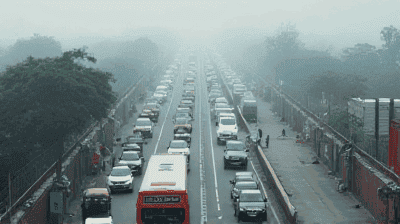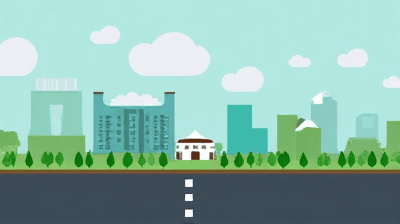
Air pollution is one of the most pressing environmental challenges facing India today. With rapidly growing urbanization, industrialization, and vehicular emissions, poor air quality has become a public health crisis, affecting millions of lives across the country. In response to this dire situation, the Government of India launched the National Clean Air Programme (NCAP) in 2019, aiming to reduce particulate matter levels and improve overall air quality.
India is home to some of the world's most polluted cities. According to the World Health Organization (WHO), the country consistently ranks among the highest in terms of air pollution levels. Factors such as industrial emissions, vehicle exhaust, construction activities, and the burning of biomass and agricultural waste contribute to the poor air quality observed in urban and rural areas alike. The adverse effects of air pollution include respiratory diseases, cardiovascular problems, and reduced life expectancy.
Recognizing the need for urgent action, the NCAP was launched with a goal to improve air quality through a multi-faceted approach. Some of the primary objectives of the programme include:
Reducing Particulate Matter (PM) Levels: The NCAP aims to reduce PM10 and PM2.5 levels in non-attainment cities (cities that exceed prescribed air quality standards) by up to 30 percent by 2024.
Strengthening Air Quality Monitoring: The programme seeks to enhance the monitoring and assessment of air quality through the establishment of more monitoring stations across the country.
Promoting Sustainable Practices: Encouraging cleaner technologies, improved waste management, and adoption of renewable energy sources are integral components of the NCAP.
Raising Public Awareness: The initiative aims to engage citizens in air quality management and promote awareness regarding the health impacts of air pollution.
Fostering Interdepartmental Collaboration: The NCAP emphasizes coordination between various government agencies and stakeholder involvement to create a holistic approach to air quality management.

One of the key achievements of the NCAP has been the expansion of air quality monitoring infrastructure. As of 2024, the number of air quality monitoring stations has risen significantly, with the introduction of Continuous Ambient Air Quality Monitoring Stations (CAAQMS) across many cities. These stations provide real-time data on pollutant levels, enabling better assessment and response strategies.
The NCAP has identified 122 non-attainment cities which consistently exceed air quality standards. This categorization has focused attention on specific regions that require targeted interventions. The designation of these cities allows for tailored action plans to address local sources of pollution, reflecting a more regionalized approach to air quality management.
Individual cities have been tasked with developing and implementing specific action plans to address air quality issues. These action plans often include measures such as:
Traffic Management: Initiatives to improve public transportation, promote electric vehicles, and enforce stricter emissions norms for vehicles.
Dust Control Measures: Strategies to mitigate dust pollution from construction sites and unpaved roads, including the use of water sprinklers and green belts.
Waste Management Improvements: Programs aimed at reducing waste burning and improving solid waste management practices to minimize emissions.
Through various outreach initiatives, the NCAP has successfully raised public awareness about air quality and its health impacts. Campaigns have been launched to educate citizens on pollution sources and encourage eco-friendly practices.Programs encouraging participation in air quality monitoring efforts and community-led initiatives have also been instrumental in fostering a sense of responsibility among citizens.
The NCAP has led to the revision and enhancement of existing environmental policies. It has also contributed to stricter norms and regulations concerning emissions from industries and vehicles, promoting compliance with the National Ambient Air Quality Standards (NAAQS).
While significant progress has been made since the introduction of the NCAP, several challenges and pitfalls remain in the journey toward cleaner air.
Despite the establishment of action plans in many non-attainment cities, the implementation of these plans has been inconsistent. Factors such as lack of coordination among government departments, inadequate funding, and bureaucratic delays have hindered the timely execution of necessary measures.
Securing adequate financial resources for the NCAP has been a persistent challenge. Many state governments have struggled to allocate the necessary budgets for air quality management initiatives, impacting the efficacy of implementation efforts. Furthermore, limited technical and human resources have affected the capacity of local authorities to execute action plans effectively.
The air quality crisis in India is driven by multiple sectors, including transportation, industry, agriculture, and waste management. A fragmented approach that does not consider the interconnections between these sectors often results in ineffective interventions. Addressing air pollution requires a cohesive strategy that integrates actions across various domains.
While public awareness campaigns have increased knowledge regarding air pollution, translating this awareness into actionable behavior remains a challenge. Compliance with regulations related to dust control, waste management, and vehicle emissions is often limited, necessitating stronger enforcement mechanisms.
Sustained political commitment is essential for the success of the NCAP. Political priorities can shift, affecting the focus and resources allocated to air quality initiatives. Ensuring continuity and commitment across various political administrations is crucial for programme success.

The establishment of robust air quality monitoring infrastructure has provided valuable data for informed policymaking. Continued investment in research and data collection will enhance the understanding of pollution sources and trends, leading to more effective strategies.
Addressing air pollution effectively necessitates an integrated approach that encompasses all contributing sectors. Collaboration among different government agencies, industries, and civil society is essential for creating holistic solutions that address the root causes of pollution.
Active community engagement plays a vital role in successful air quality management. Empowering citizens to take part in monitoring and decision-making processes fosters a sense of ownership and responsibility, which can strengthen compliance with established regulations.
Developing sustainable funding mechanisms is critical for the long-term success of the NCAP. Innovative financing models that leverage public and private investments can help secure the resources needed to implement air quality initiatives.
To achieve the ambitious objectives set forth by the NCAP, there is a need for strengthening the policy framework governing air quality management. This includes updating air quality standards, enhancing regulatory measures, and ensuring better enforcement at the local level.
Effective interventions identified in various cities should be scaled up and replicated in other regions facing similar challenges. Sharing best practices and lessons learned across different jurisdictions can promote a collective approach to improving air quality.
Future efforts should focus on expanding public participation in air quality management. This can be achieved through community workshops, citizen science projects, and partnerships with local organizations, ensuring that various stakeholder voices are heard in the decision-making process.
Investment in research and innovation will be crucial for developing new technologies and solutions to combat air pollution. Supporting startups and research institutions that focus on air quality improvements can lead to the emergence of effective and sustainable practices.

The National Clean Air Programme represents a significant step towards addressing India's air pollution crisis. After five years of implementation, there have been notable achievements in air quality monitoring, public awareness, and policy development. However, various challenges remain, and sustained commitment from all stakeholders—government, industries, and citizens—is essential to overcome these hurdles.
The journey toward cleaner air in India is a complex and ongoing process. By learning from past experiences, fostering collaboration, and maintaining political will, the NCAP can pave the way for a healthier and more sustainable future for all Indians. As the nation aspires to breathe clean air, it is imperative to stay committed to the goals of the National Clean Air Programme and work collectively toward achieving a cleaner environment.